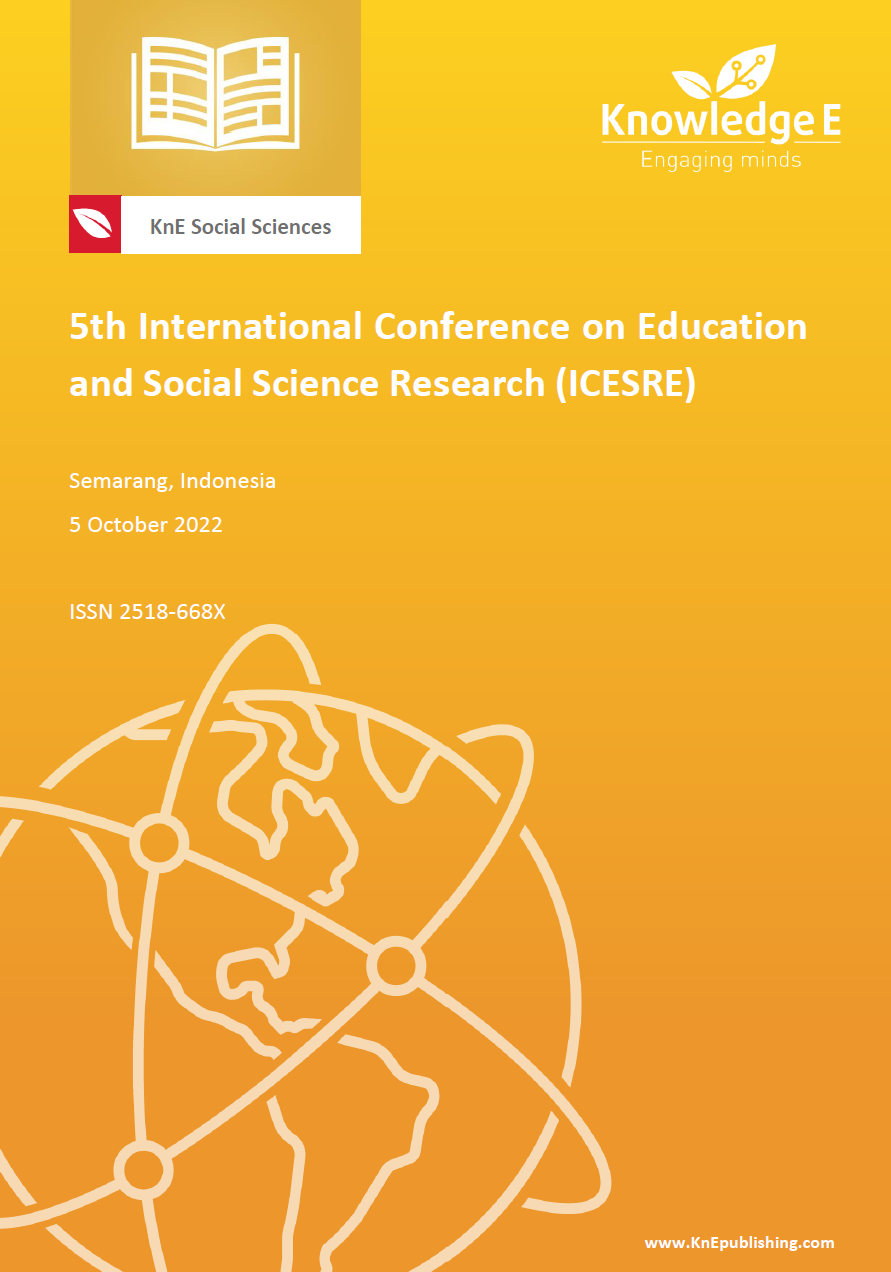Student and Teacher Perceptions of Features in an English Textbook for Junior High School
DOI:
https://doi.org/10.18502/kss.v7i19.12451Abstract
Textbooks have been found to have weaknesses, affecting the curriculum, approaches, methods, and teaching materials. Therefore, changes need to be made to achieve maximum learning outcomes. The objective of the study was to investigate the perception of teachers and students towards English teaching materials that followed a pragmatic perspective as a learning resource to build the communicative competence of junior high school students. Quantitative research with data collection using a 5-scale Linker questionnaire was used to measure the English for Junior High School Students: Pragmatics Based textbook. There were 9 teachers and 82 students who filled out 20 questions about their perceptions. The results showed that the teacher’s perceptions were: feasibility of content/material (61%), presentation in books (63%), language (59%) and dialogue content conformity (50%). Meanwhile, the student’s perception questions included adjustments to students’ abilities. These were the vocabulary used in the book, dialogues contained in the book, easy-to-understand instructions and exercises. The results showed that 50% of student respondents felt that the textbook was very appropriate. Hence, it can be concluded that the content of the English textbook with a pragmatic perspective was appropriate for seventh grade junior high school students in Semarang.
Keywords: Textbooks, Pragmatics, Perceptions, Junior High School
References
Jacob LM. Pragmatics. An introduction. Oxford: Blackwell; 1993.
Celce-Murcia M, Dörnyei Z, Thurrell S. Communicative competence: A pedagogically motivated model with content specifications. Issues in Applied linguistics. 1995;6:5– 35.
Celce-Murcia M. Rethinking the role of communicative competence in language teaching. InIntercultural language use and language learning. Dordrecht: Springer; 2008. p. 41–57.
Creswell JW. Educational research: Planning, conducting, evaluating, quantitative and qualitative research. 5th ed. United State of America: Pearson Education Inc; 2012.
Senowarsito S. Politeness strategies in teacher-student interaction in an EFL classroom context. TEFLIN Journal. 2013;24:82–96.
Nostrand HL. The levels of cultural competence. Critical issues in foreign language instruction. New York: Garland; 1991.
Mardalis. Metode penelitian suatu pendekatan proposal. Jakarta: PT. Bumi Aksara; 2008.
Sugiyono. Metodologi penelitian bisnis. Bandung: ALFABETA; 2014.
Bachman LF. Fundamental considerations in language testing. Oxford, UK: Oxford University Press; 1990.
Kasper G. Second language teaching & curriculum center. Hawaii: University of Hawaii; 1997.
Chaer A. Kesantunan berbahasa. Rineka Cipta; 2010.
Mey JL. Pragmatics: An introduction. New York: John Wiley & Sons; 2001.
Abdurrahman A. Pragmatik; Konsep dasar memahami konteks tuturan. Lingua: Jurnal Ilmu Bahasa dan Sastra. 2006;1.
Ihzar. Konteks Pragmatik dalam proses pembelajaran bahasa di kurikulum 2013. Jurnal Kreasi. 2015;15–27.
Richards JC. Curriculum development in language teaching. Cambridge, UK: Cambridge University Press; 2001.
Sadjati IM. Hakikat Bahan ajar: Modul 1; 2012.
Rencana strategis penelitian (Renstra Penelitian). Universitas PGRI Semarang; 2019.
Presidential Decree about Rencana Induk Riset Nasional Year 2017-2045; 2018.

